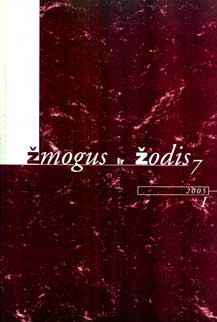Mokslinis stilius ir jo intertekstualumas
The Scientific Language Style and Its Intertextuality
Author(s): Audronė BitinienėSubject(s): Language and Literature Studies
Published by: Vytauto Didžiojo Universitetas
Keywords: intertextuality; quotation; reference; scientific style.
Summary/Abstract: The intertextuality of scientific-style texts is systematically stressed, as every text of this kind is a component of a two-direction communication process, and it implies interaction of scientific activity subjects as well as their polylogue. Intertextuality, together with other textual features, is helpful when disclosing peculiarities of scientific texts and their semantic structure. It may be related with special features of the scientific style, as accuracy, objectivity and highlighted consistence. Intertextuality of scientific texts may have two forms, i.e. the explicit and the implicit form. Quoting (i.e. quotations and indirect speech) are peculiarities attributed to the explicit form. They have been discussed as early as in the syntactic works related to the Lithuanian language. Scientific texts often contain reference expressed in words, or phrases not containing references inevitable for other quotation forms. Semantic terms are discussed in the article, made up of the knowledge subject and object (Newton mechanics, Einstein's theory of chances, etc.) and indicating intertextual interaction. The article also describes invariance of quotations and reference. The intermediate position between the implicit and explicit forms of intertextuality belongs to systematic intertextuality, as scientific style texts may contain interaction among different systems of signs, as well as between a scientific text and a non-verbal sign system. Scientific style texts contain usage of intertextual correlation devices oriented towards the textual paradigm of this style. Meanwhile, their interaction with texts or situations of other types is not systematic.
Journal: Žmogus ir žodis
- Issue Year: 07/2005
- Issue No: 1
- Page Range: 68-72
- Page Count: 5
- Language: Lithuanian

